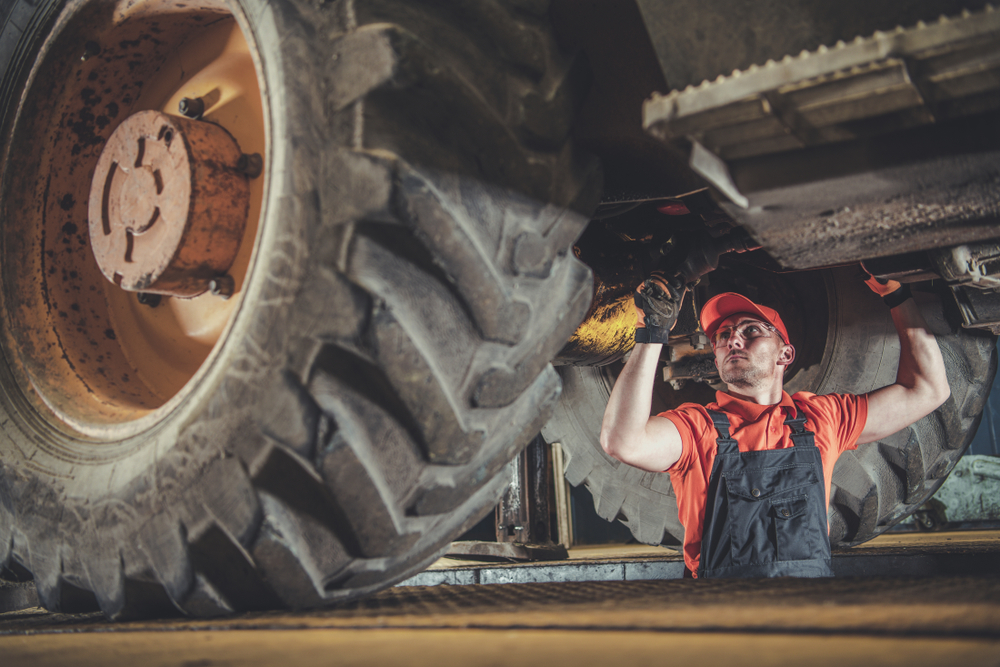When a company handles heavy machinery, they are typically cautious about ensuring that the operator has received proper training and education on handling the machine. However, accidents can occur when heavy machinery is operated by an individual or a smaller company without the knowledge and experience of their operator. Due to less-than-adequate safety standards in place, these types of heavy machinery accidents can lead to severe injuries or even fatalities.
1. Overturning of the Equipment
Some work environments are more prone to equipment overturning than others. For example, when the terrain is uneven and not completely level, the machine may tend to tip over. This can be dangerous because the operator inside is still trying to operate his equipment. The condition can quickly become life-threatening if the operator is trapped inside the machine while it is on its side or if he cannot get out of it safely.
In some cases, additional heavy machinery must be used to right and upright the overturned machine before anyone can safely go back in and operate it. Chicago workers comp attorney can help you understand how to file a report and understand which types of accidents are more likely to occur.
2. Electrocution Injuries and Burns
When working in construction and manufacturing environments, it is common to hear that a worker has been electrocuted. Electrocutions happen when the machinery operator comes in contact with either electrical wires or currents. Electrical shock occurs when the operator touches a wire or cable and sends an electrical current through his body.
Even if an accident occurs, some workers may not receive any injuries immediately. They will return to work like nothing happened, only to be injured later because their nerves are still affected by earlier contact. The injuries can also occur if the employee is not wearing any protective gear or protection at the contact time. Chicago workers comp attorney can help you understand how to file a claim and ensure you are properly compensated for your injuries.
3. Collisions
Collisions with other machines are also common in various workplaces and industries. When an operator is operating a machine with heavy equipment on the back, and somebody else comes in to use it, they come up against it at high speeds. This can cause catastrophic injury or even death if the other operators do not have adequate control over their machines. In some cases, only one person is operating both machines, which can lead to collisions.
In Chicago, workers comp attorneys can help you understand how to file a claim for your injuries and ensure you are compensated for your losses.
4. Struck-By Accidents
In some instances, heavy machinery can be designed to have an open hitch allowing the operator to get in and out of the machine. However, some machines are not built with this feature. The operator may have to climb a ladder to get inside.
When two machines are next to each other operating at high speeds, it is very common for one employee to forget about the other machine and climb out at the wrong time, resulting in a collision with one of the machines because he needed to pay attention. The most commonly injured body parts from this accident include hands and feet. Here are some tips to help you prevent struck-by accidents.
a. Use the controls correctly
By using the controls correctly, you can avoid many accidents that occur on the job. Use a combination of touch and sight to guide your machine. Do some things by hand and some by remote. This way, you keep your hands off the steering wheel as much as possible and at least have another eyesight keeping tabs on the controls.
b. Wear Appropriate Clothing
Depending on the job and the environment, consider wearing gloves (not just for protection, but for control) and boots with steel caps or rubber soles. If the machine you are operating is heavy, consider wearing a thick pair of pants and a jacket or sweatshirt under it.
c. Maintain a Safe Distance From the Machine While Operating It
When operating most types of heavy machinery, it is not a good idea to operate it right next to another machine. If the other machine stops (like a hydraulic changeover), you could run into it with your own. For another thing, you can’t control your machine properly if you’re too close to it. It’s also harder for other people to see you and more difficult for them to communicate with you near the machines.
5. Crush Injuries
Crush injuries can occur in a variety of settings. Heavy machinery can crush or injure its operator when it is being operated by somebody else, such as in the case of a compressor that has an open hitch and is operated by a worker who is not experienced enough to handle it. In the past, these types of injuries have occurred at construction sites where other heavy machinery was being operated in areas that were not designed to allow others to access it.
In addition, manufacturing facilities workers will have crushed hands and feet due to their bodies contacting heavy machinery or equipment during the operation.
6. Getting Caught and Dragged Along by Moving Machinery
Operators working with heavy machinery will sometimes be trapped between two moving machines or other heavy equipment. For example, a machine moving sideways in a straight line may leave its operator caught between two moving pieces of equipment. When this occurs, the operator will not have enough time to react or get out of the way before he is injured. The injury can occur in various body parts depending on experience and work habits.
In some cases, working with heavy machinery can be extremely hazardous due to the machines’ nature. When using heavy equipment, you need to understand the dangers you can face while operating these machines. You should seek a personal injury attorney if you have been injured in such a manner. You should consult an attorney who will be able to help you navigate through the legal process.

